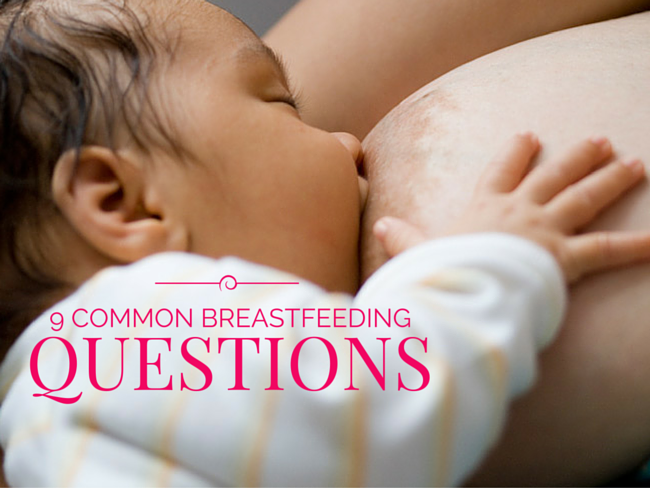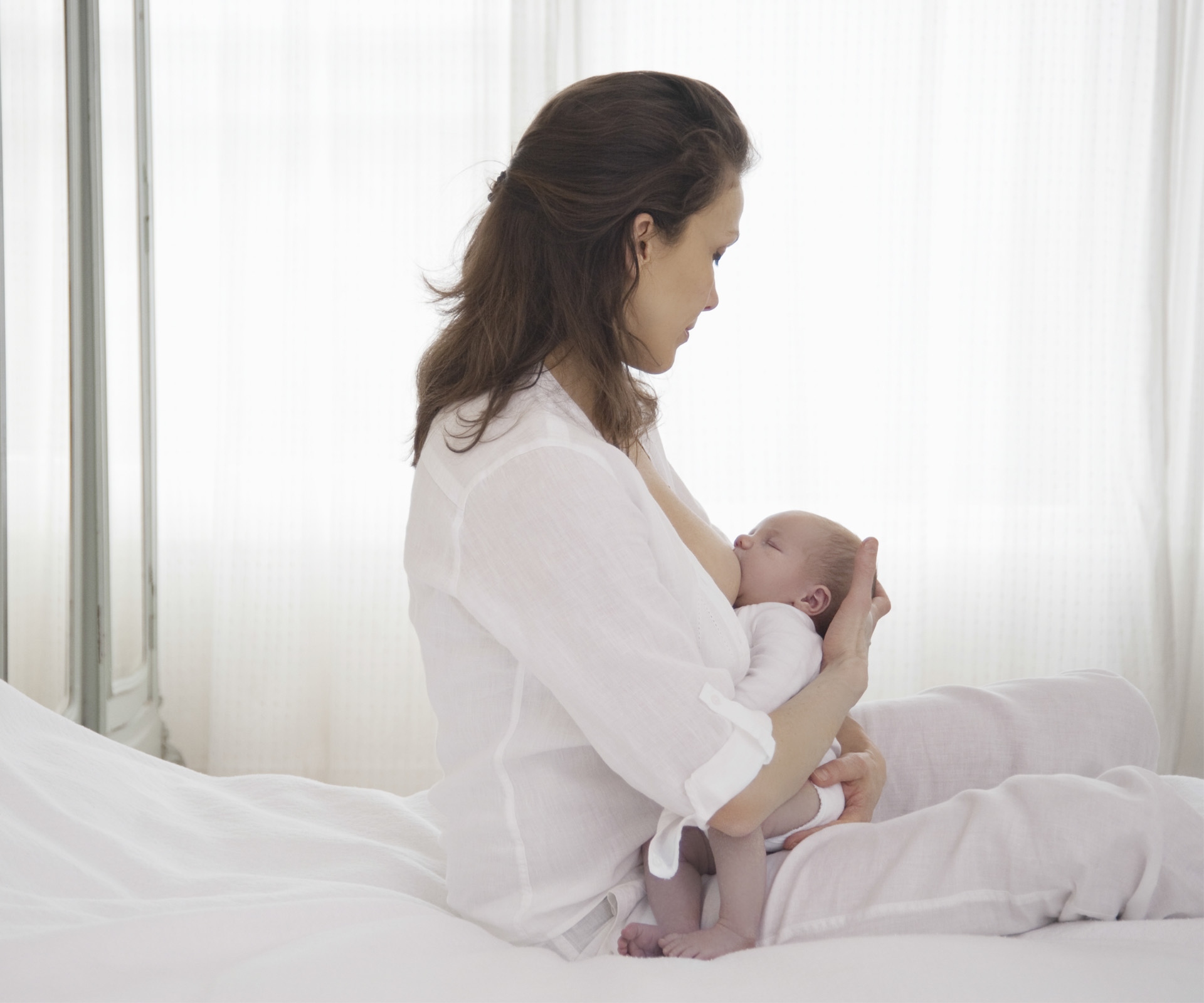Breastfeeding sounds like it might be easy, but surprisingly it can take a little while for both mum and baby to learn how it all works.
It’s not always straightforward, especially in the early days of motherhood and it can all start to feel too hard and overwhelming, especially when your baby is crying!
Read on as Mother & Baby magazine expert and lactation consultant Barb Glare answers all those tricky breastfeeding questions to keep you both attached and feeding happily.
1. How long should breastfeeds take?
There are rarely any “shoulds” when it comes to breastfeeding. Most babies take a long time to feed at first, and there will be days when you feel like you never get off the couch.
Babies will be on one breast for 20 minutes to 30 minutes and, after a nappy change, will spend a similar time on the other breast. But this is a fleeting stage and before you know it she’ll be downing a breast in 10 minutes flat… and you’ll wonder how it all changed so quickly.
If your baby is on one breast for a really long time – say 30 minutes to an hour – there is no doubt she is loving the cuddle time with mum, but she is probably only getting a trickle of milk towards the end. If this is the case it’s better to take her off a bit sooner and offer the other breast.
2. Should I offer just one breast each feed, or should I always offer both breasts?
It’s a good idea to offer both breasts, even if she doesn’t take both breasts.
Your baby’s needs change over time and, in the beginning, most mums have an oversupply of milk and find their bub is satisfied with one breast.
Gradually, she will start taking both breasts at every feed. Feeds will also become much quicker, until she hits the ‘sticky beak stage’ at about four-months-old. Then it’s a quick suck and onto more exciting adventures. But trust your baby – she knows how to work the breast and where her milk comes from.
3. How do I measure what is a three-hourly feed?
Once breastfeeding is up and running, throw out the clock and follow your baby’s lead. She will probably be demanding food before the three-hour mark anyway. But if your baby is very young, sleepy or premature, and not very good at demanding feeds, you may be advised to feed your baby every three hours. Time this from the beginning of one feed to the beginning of the next feed.
4. How can I tell my baby is really drinking, not just sucking, towards the end?
You’ll soon start to notice changes in your baby’s sucking over the course of the feed.
At the start there will be quick, short sucks to elicit the milk ejection (the letdown reflex), followed by longer sucks and maybe even some gulping as she deals with your letdown. Finally, there will be long, rhythmic sucks that taper off as your baby goes to sleep and finally releases the breast. Remember, breastfeeding is about comfort and connection as much as getting food down the hatch.
When babies feed they experience a release of hormones that help them relax and fall asleep (and make mum drowsy too). So let her suck herself to sleep on the breast – it’s what nature intended.
Another tip to look for with your baby is to see her hands. Typically tight fists when she’s sucking and drinking, where as relaxed hands will mean she’s enjoying a comfort suck.
5. I’m finding it hurts when I breastfeed my little one. How much pain should I be experiencing?
A little tenderness in the early days is pretty common, but breastfeeding doesn’t hurt, so if you’re experiencing pain you need to get help.
Get in touch with a lactation consultant or a breastfeeding counsellor who can assess your situation and offer you assistance.
6. How do I know when my baby is finished feeding on one side?
Most babies will let you know fairly clearly when they have finished the first side – and to keep you on your toes, this will change from feed to feed, and over time!
Generally speaking, your baby will release the nipple when she’s finished. However, very young babies might be enjoying the snuggle so much they will stay on one breast for a very long time.
If she has had 20 minutes or so on one side, it’s okay to gently break the suction by easing a clean finger into the side of her mouth. Burp her, change her nappy and offer her the other side, which she may or may not take.
Pretty soon your baby will finish feeding on one side in about 10 minutes, fuss to tell you she wants more, then guzzle down the other side. You won’t believe she can finish a feed so quickly.
7. How many kilojoules a day does feeding use up?
Breastfeeding burns around 1250 to 2100 kilojoules a day, helping you use up the reserves of fat accumulated in pregnancy.
Your milk supply is not affected much by diet, but eat a well-balanced diet for your own benefit and don’t be surprised if you’re more hungry than usual.
8. Can you explain to me what a ‘demand feed’ is? My baby always seems hungry.
Demand feeding means your baby ‘asks’ and you feed her. It’s really the easiest way to breastfeed. Most newborns feed at least eight to 12 or more times in one 24-hour period. In that time they’ll usually have one longer sleep (for a newborn, three hours is as good as it gets).
Then there will be another time of the day or night when they have a cluster of feeds very close together. It seems like a lot of feeds, but if you count how many times you put something into your mouth – snacks, cups of tea, meals – it’s not that different.
Human bodies need constant refuelling, and babies’ tummies are tiny so empty quickly!
9. What does it mean when people say bring ‘baby to breast’ and not ‘breast to baby’ when feeding?
It means that when you breastfeed your baby, you should sit back comfortably in a chair and bring your baby up to your breast, rather than hunch over to drop the breast in your baby’s mouth, since this gets very hard on your back after a while.
You may have to lean forward a bit to attach your baby, but when she is on the breast and happily sucking, readjust your position so that you can sit back comfortably and cradle your baby.


